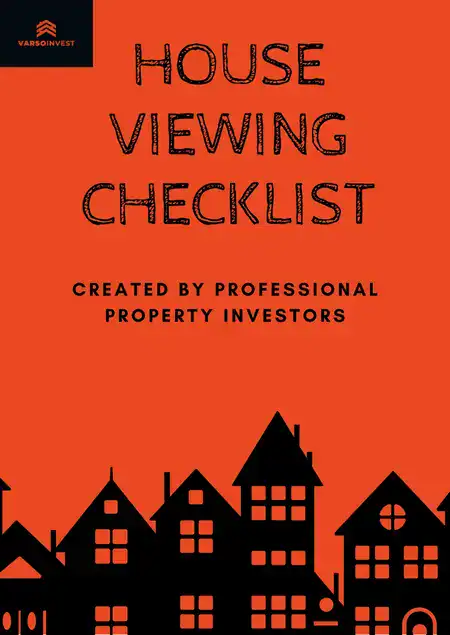How to Start Property Investment: Your First Buy-to-Let Guide
Your first property investment doesn’t need to be a home run. It just needs to exist.
After helping over 2000 investors buy their first properties, I’ve learned something surprising: the most significant barrier isn’t money, market knowledge, or finding the right deal. It’s the gap between knowing what you should do and actually doing it.
Most new investors get stuck in analysis paralysis. They read every article and watch every YouTube video, yet still can’t pull the trigger. Why? Because they’re waiting for the perfect opportunity that ticks every box.
Here’s the truth: perfect opportunities don’t exist for beginners.
The Confidence Bridge Strategy
I’ve watched hundreds of successful investors follow the same pattern. They start close to home, even when the numbers aren’t spectacular.
Take Sarah, one of our clients from London. She knew Birmingham offered better rental yields – 7% versus 3% in her area. But she bought her first property in Reading instead. Why? She could drive there in 45 minutes. She knew the train line. Her university friend lived nearby.
The Reading property returned a modest 4.5%. Not amazing, but solid. More importantly, it taught Sarah that property investment actually works. Tenants paid rent on time. The property didn’t collapse. She didn’t need to visit every month.
Six months later, she bought in Birmingham. Then Liverpool. Now she owns eight properties across the north, chasing the best returns without a second thought.
That first Reading property was her confidence bridge.
Start With Your Comfort Zone
If you’re struggling to take the plunge, find your confidence bridge. Look for somewhere that gives you enough psychological comfort to act.
Maybe it’s where you went to university. Perhaps it’s a city you can reach by train in two hours. Maybe it’s simply the nearest place with decent rental yields.
The key isn’t finding the optimal location. It’s finding somewhere you feel confident enough to start.
Here are some practical starting points:
University towns often work well. You already know the area. Student rental demand is predictable. The numbers usually make sense.
Commuter belt properties can be beneficial if you’re in the South. Yes, yields are lower, but you understand the market. You know which areas are up-and-coming.
Regional cities with good transport links to your home base. Manchester, Birmingham, and Leeds – all accessible by train – all offer better yields than most southern locations.
Why “Good Enough” Is Good Enough
Your first property doesn’t need to be your best property. It needs to teach you that property investment works in practice, not just on spreadsheets.
I learned this lesson myself. My first buy-to-let was in my home town – definitely not the best financial choice. The rental yield was 5.2% when I could have found 8% elsewhere. But I understood the local market. I knew which streets were popular with tenants.
That property performed steadily for three years. More importantly, it gave me the confidence to expand. Property number two was in a different city entirely. By property five, I was buying purely on numbers, location irrelevant.
The Reality Check Most Investors Need
Property investment rewards action more than perfection. Every month you spend researching the perfect deal is a month of rental income you’re not earning.
The data backs this up. According to Rightmove, the average house price has increased by 4.5% annually over the past 20 years. Even a “mediocre” first investment likely outperforms cash sitting in a savings account.
Consider this: a £200,000 property with a 5% rental yield generates £10,000 in annual income. If prices grow at historical averages, that same property could be worth £220,000 after two years. Total return: £29,000 plus ongoing rental income.
Compare that to £200,000 earning 1.5% in a savings account. Total return after two years: £6,000.
The mediocre property investment still wins hands down.
Three Steps to Get Started Today
- Pick your comfort zone. Choose somewhere you feel confident investing, even if the numbers aren’t perfect.
- Set a deadline. Give yourself 90 days to complete your first purchase. Analysis paralysis thrives on open-ended timelines.
- Accept “good enough.” Your first property just needs to be cash-flow positive and in a reasonable area. Everything else is a bonus.
The Compound Effect of Starting
Here’s what happens when you get that first property under your belt: everything else becomes easier.
You understand how mortgages work in practice. You know what property managers do. You’ve dealt with tenant enquiries and maintenance requests.
Most importantly, you realise property investment isn’t as complicated as it seems from the outside. It’s just buying a house and renting it out.
That confidence opens doors. Suddenly, buying in unfamiliar cities doesn’t feel like such a leap. You start focusing on numbers instead of proximity. You begin building a proper portfolio.
Stop Waiting for Perfect
The property market doesn’t wait for perfect timing. Interest rates change. Prices move. The “perfect” opportunity you’re analysing today might not exist in six months.
Your first investment property is like learning to drive. You don’t start on the motorway – you start in an empty car park. But you do start.
Pick somewhere you feel comfortable. Run the numbers. If they work, move forward. Don’t let a perfect strategy prevent you from getting started at all.
The bridge to property success isn’t built on perfect deals. It’s built on taking action.
Access our portfolio of over £350M worth of pre-sourced, off-market investment properties, and we’ll show you how to generate £5k+ a month.





